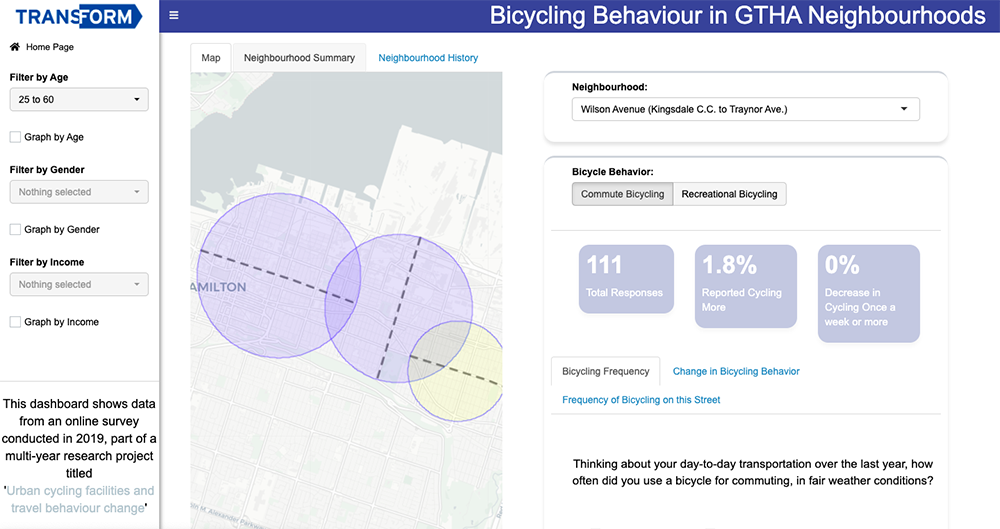Does New Cycling Infrastructure Really Lead to More Cycling?
There is plenty of literature pointing to the popularity of new cycling infrastructure installed in cities across North America. But few studies, if any, have sought to identify a causal relationship between new cycling infrastructure and increased rates of cycling.
Dr. Raktim Mitra, Associate Professor at the School of Urban and Regional Planning, Ryerson University, is now completing a multi-year study funded by the SSHRC whose purpose has been to answer the question, “does new cycling infrastructure really lead to more cycling?” Focusing on 11 sites in the Greater Golden Horseshoe with cycling facilities completed between 2015 and 2018, and other comparable sites without cycling facilities, the study involved a survey of over 1,600 households to determine the impact that nearby installations had on the cycling habits of occasional and regular cyclists.
What Mitra discovered will be good news to cycling advocates and city builders who aim to shift people towards active transportation. The study results indicate there are 2.26 times higher odds of increased bicycling on streets with a new on-street cycling facility, compared to locations without one, and that regular cyclists were 2.28 times more likely to bicycle almost every day for commuting following the addition of a local cycling facility. The research also found--consistent with other studies in the field--that on-street separated cycle tracks were much more effective in encouraging increased cycling than painted lanes. But generally, bicycling in this region is on the rise, regardless of the presence of cycling facilities. The survey results show that 7% of respondents were cycling at least once a week for commuting, and 19% were regularly cycling for recreational purposes in the summer and fall of 2019.
Understanding that the neighbourhood-level data from this study would be of interest to advocates, planners and policy makers, Dr. Mitra has created a new online tool that allows users to access and explore the data using various filters. Hosted by TransForm Lab at Ryerson University, the Bicycling Behaviour in GTHA Neighbourhoods dashboard (external link) makes data resulting from empirical study available to the wider community.
As Toronto celebrates Bike Month (external link) starting today, this new dashboard demonstrates how cycling is on the rise across the region. The data it shares will aid in building greater support for the addition of safe cycling infrastructure across the GTHA to meet growing demand and to facilitate a shift to more active transportation.
Cover photo by Ry Shissler, Cycle Toronto, 2020.
